September 2020:
McGee officially resigns; Redmond nominated to succeed her
by Robert Lynch, September 30, 2020; Updated Oct. 1, 2020
Moments after the Enfield Town Board Wednesday, September 30th, adopted its final 2021 Town Budget, Town Supervisor Beth McGee officially followed through on her earlier promise and tendered her resignation as Supervisor to her Board.
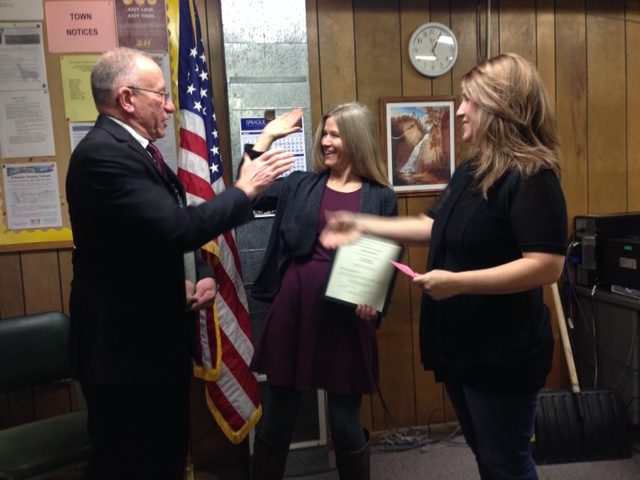
Board member Mimi Mehaffey sought immediately to designate her fellow Councilperson, Stephanie Redmond, as McGee’s successor. But after Councilperson Robert Lynch (this writer) and Town Clerk Ellen Woods raised objections as to the move’s legality—most importantly, whether McGee and/or Redmond could vote on Redmond’s own promotion—the Town Board postponed action on Supervisor succession until Monday night, October 5th, to enable members to first obtain legal guidance.
A vote to elevate Redmond to Supervisor was stopped dead in its tracks at midpoint in its call, after two Councilpersons supported the appointment, Lynch opposed it, and Redmond’s ability to vote for herself was called into legal doubt and never obtained.
“You’re ridin’ for a fall!” Lynch angrily admonished his colleagues as they sought to speed confirmation of Redmond as McGee’s successor. Lynch, referencing what he said were the words his own late father had used in scolding him as a boy. Lynch bluntly predicted that the voters would remove each of his fellow Board members in the November 2021 election because of their action. If Redmond is elevated to Supervisor, she would need to face the voters next year, as would Councilpersons Mehaffey and Virginia Bryant, as well as any yet-to-be-chosen Councilperson the Board might select to fill Redmond’s current seat.
As the Board attempted lightning-fast action on McGee’s replacement, Town Clerk Woods cautioned that attorneys from the New York State Association of Towns had advised her that neither McGee nor Redmond could vote on succession, since McGee had already resigned, and Redmond could not vote for herself without raising potential conflicts of interest.
“They were very, very clear on this,” Woods said following multiple consultation with Association lawyers. Even though with Redmond recused, a two-to-one ballot would technically constitute a majority, “there need to be three full (affirmative) votes” for Redmond’s elevation to be binding, Woods said. If that legal opinion holds, any of the three voting members, including Lynch, would hold effective veto power.
Lynch, meanwhile, reminded the Board that in neighboring Ulysses, Councilperson Nancy Zahler was recently elevated to fill a Supervisor vacancy only after she’d first resigned her Board member’s position hours earlier. Lynch pledged to secure his own legal advice.
Supervisor McGee, who’d first announced resignation intentions in March, but then put those departure plans on hold after the COVID-19 pandemic struck, left with parting words for those in Enfield Government she liked, but caustic criticism for those with whom she often disagreed.
“I applaud Councilpersons Mimi Mehaffey, Virginia Bryant, and Stephanie Redmond who have worked valiantly together to get much work done in the midst of COVID-19 and in spite of the obstruction and toxic environment created by Councilperson Robert Lynch, Clerk Ellen Woods, and Highway Superintendent Barry Rollins.”
McGee continued: “As a resident and taxpayer, I look forward to a new board that will continue to overcome and outshine the negative voices that seek to hamper responsible and positive stewardship and community connection in the Town of Enfield for all who live here. I will continue to support the Town Board in these efforts.”
Indeed, McGee, locked horns with Lynch, Rollins and Woods until the bitter end. Minutes before her resignation announcement, McGee led her Town Board’s majority to grant final approval to a $1.97 Million 2021 Budget, one which raises Supervisor’s pay by 20 per cent, but cuts more than an equal percentage from the Highway Department’s workforce. One of Superintendent Rollins’ five road workers will lose his job. Lynch attempted to restore the cuts, but to no avail.
One by one, the Enfield Board rejected, for lack of a second, Lynch’s proposed revisions to restore the fifth position; grant continuing Highway department employees a two per cent raise; either eliminate or cut by half the Supervisor’s $4,000 raise; and cut by half the controversial $10,000 stipend awarded earlier this year to Redmond as Deputy Supervisor. The Board also rejected a sixth budget revision sought by Lynch that would increase by $11,000—raising to $25,000—the Contingent Account, a financial reserve saved for emergencies. McGee had seconded this final motion, but then opposed it on the final vote. Lynch said the uncertainty caused by COVID and the cuts inflicted on Highway staff warranted the added reserves.
Woods, meanwhile, brought to McGee’s final meeting her recurring complaint about being underpaid. Though the new budget grants the Clerk a $4,000 raise, equal to that of the Supervisor, Woods maintained she deserves far more; insisted that her job is full-, not part-time; and warned she now makes so little she may need to apply for food stamps.
Lynch, as he did last week, called the Clerk’s pay an “embarrassment,” comparing Woods’ current $20,000 annual compensation to that of the more than $56,000 paid the Clerk in neighboring Ulysses.
But in remarks he delivered at the meeting’s earlier Public Hearing, the maverick Councilperson focused on the Highway cuts.
On the day Rollins terminates his fifth worker, Lynch said to his colleagues, “I want each of you to look that same man straight in the eye and explain to him why you’ve chosen to keep your own job, but not his.”
“This is a short-sighted budget; a vindictive budget; a cold-hearted budget. This is not the way to run a Town.”
Others agreed. “It’s a little off balance, as far as I’m concerned,” said hearing attendee Roy Barriere, a former Town Supervisor, referring to 15 per cent spending increases in the General Fund, but budget cuts for Highway.
Mackenzie Newhart, wife of a highway worker, alleged the Board trimmed the Department’s budget “because you don’t like Buddy,” further suggesting the all-female Board majority cut the staff “maybe being (because) they’re all men.”
Councilperson Mehaffey, by contrast, called the budget “amazingly progressive.” She prided McGee for drafting a spending plan that placed increasing emphasis on non-road investments, given that only a fraction of residents live on Town roads that Rollins maintains. And Mehaffey, acknowledged the unavoidable economic pain brought by COVID, brought nearly to tears in recounting how she’d “in one week laid off 200 people” in her bakery business earlier this year.
In July, 115 people, under the banner of “Enfield’s Democracy is in Danger,” petitioned the Town Board requesting, in part, that the Town’s next Supervisor be elected by the people, not appointed by the Board. With McGee delaying her departure until beyond the date to place the Supervisor’s replacement on this year’s ballot, many residents have sensed McGee has played with their freedoms, a point Lynch drove home in a raised voice:
“My late Dad used to say these words when I did something that wasn’t quite right: ‘You’re ridin’ for a fall, Bob.’ And I’ll tell you; this entire Board with this community is ridin’ for a fall. You don’t realize how arrogant you are acting. When we had a petition with people who said, ‘No, Don’t coronate; let us decide.’ Now, here you go, doing what you please. And I would highly predict—and I would bet money on it—that in November of 2021, everybody who sits in an elected governmental position on this Board—aside from me, because my term won’t be up—is going to be voted out of office. So get ready for it.”
While Supervisor McGee’s breakneck pace toward budget adoption may have tipped her hand to some observers, her resignation announcement near the conclusion of Wednesday’s budget meeting caught some, including Lynch, by surprise.
As for McGee’s departure, “Given what she said about me in her resignation letter, perhaps my best response is no response,” said Lynch, acknowledging the now ex-Supervisor’s lingering animosity. “Oh, I will say this,” he added: “Long Live Enfield.”
###
Foul mood (Foul-mouthed?) Enfield Board reviews proposed 2021 Town Budget
Analysis by Robert Lynch, September 25, 2020
Wednesday, September 23rd was not a good night for Buddy Rollins, Enfield’s Highway Superintendent. Nor was it for Ellen Woods, the Town Clerk. Nor for this writer, Councilperson Robert Lynch. Arguably, nobody in Enfield government enjoyed themselves during the latter moments of Wednesday’s Special Town Board meeting, where members bickered and the Board’s majority stood its ground, unwilling to amend a nearly $2 Million 2021 preliminary Town budget, advanced by Supervisor Beth McGee and hurtling toward adoption at record speed.
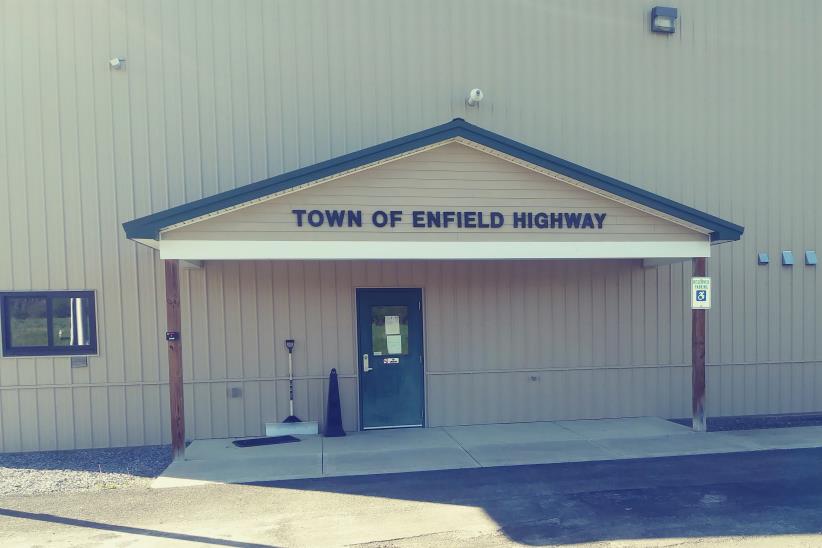
Faster than Mitch McConnell can confirm a Supreme Court nominee, the Enfield Board will likely within a week adopt its controversial, cost-cutting spending plan, McGee suggesting a final vote could quickly follow a hurried-up Public Hearing September 30th. That would place passage a mere three weeks after the Supervisor first unveiled her draft, which includes its targeted cut in Highway Department personnel by more than one-fifth.
“You don’t have a Planning Department. You want legal fees to be limited,” McGee lectured Councilperson Lynch, attempting to place him on the defensive while also justifying her own budgeted 20 per cent pay hike. “And you expect your Town Supervisor to maintain and manage all of that for you and to keep your asses out of libelous (sic) situations? So that’s what you put on the Town Supervisor.”
Lynch had requested Wednesday’s meeting two weeks earlier as he’d observed McGee’s tentative budget was racing toward preliminary status without the traditional multi-meeting Town Board scrutiny. He saw Wednesday’s session as his only opportunity to ask questions.
Question he did. But no one else shared his curiosity. When Lynch invited colleagues to weigh in, the zoom room fell silent, all members tacitly content. Instead, McGee and other Board members consumed 90-plus minutes deriding Lynch’s logic, challenging his priorities, and impugning his alleged electoral aspirations. The budget review devolved into an inquisition, one permeated with political pique, and rife with allegations of misogyny and ageism, most of them slung against the Board’s only male member.
“You have said this before that the Supervisor should step down and let someone who’s willing to do it for $20,000 (McGee’s current salary) do it,” the Supervisor said to Lynch. “What that said to me was that a 70 year old white man who didn’t have obligations of children or other needs like insurance, like a single person or a single woman might need, or a person who needed child care; these people who may need those additional supports who could represent the Town in the position… that only people like you should be afforded the ability to do these jobs here. And to me, that’s so typical and so disappointing.”
Similarly weighing in was Councilperson Stephanie Redmond, Supervisor McGee’s presumptive successor should McGee, as promised, resign before year’s end.
“I do think you’re coming from a place of privilege, Robert, and it’s important for you to acknowledge that privilege,” Redmond asserted.
But while Lynch took the brunt of Wednesday’s incoming fire, he did not take it alone. Highway Superintendent Rollins and Town Clerk Woods sat in their own hot seats as well.
“You’re going to be hurting the residents. You’re not going to be hurting me,” insisted Rollins, reacting to McGee’s plan to cut his full-time workforce from five men to four. “You’re hurting the residents of this town because the services will drop.”
Rollins has forecast that if the budget cuts take hold, snowplows will arrive later in McGee’s own part of the town, that his department will farm out more maintenance work to mechanics, and that annual clean-up days will end. McGee called them threats.
“There’s no threats here other than yours,” Rollins retorted, staring at McGee’s zoom tile. “It’s based [on] facts, with your smirky face.”
“The General Fund is going up $21,000 in payroll for administrative purposes,” Rollins complained. “Tell me what the people are going to see out of that? At least they see the roads gettin’ fixed.”
Backed up with financial spreadsheets shared with Board members just hours earlier, Lynch pressed his appeal to restore Rollins’ fifth staffer. He predicted the restoration, plus a two per cent raise for highway workers, would only boost the tax rate by 25 cents-per-thousand. Lynch also proposed the Town double the Town Clerk’s proposed pay raise. It would boost Woods’ annual salary to $28,000.
“It works toward setting things straight,” Lynch told the Board, calling the current $20 Thousand salary an “embarrassment.” He also said it would provide Town administrative jobs “a little gender equity,” noting that Rollins, a man, earns “several multiples of that,” namely $61,500.
But as with the Highway staff’s restoration, the Clerk’s raise faced a tough sell. First, because the Board accelerated the budget process two weeks earlier, further Clerk’s raises would likely be illegal, except through Local Law. Moreover, even if Clerk’s pay remains out of line, correction should only happen piecemeal.
“I have a problem of increasing it too quickly too fast,” said Councilperson Mimi Mehaffey. I feel like this is a belt-tightening year, so to go up $4,000 is a huge percentage increase.”
But upon learning that because the Board “raced with breakneck speed” two weeks earlier, his hands are tied now, Lynch first apologized to Woods, and then angrily lashed out at his colleagues:
“I will let everyone know, everyone in the public know, that I voted against moving this tentative budget that was announced at 3:00 on a Wednesday afternoon to preliminary budget stage only several hours later. I opposed that; I was the only one who did; and I’m glad I did!”
Ellen Woods was eventually given her turn, upon which she insisted her compensation not only diminishes her paycheck but also imposes the “psychological impact” of earning effectively less than minimum wage.
“In Enfield, we should pay people commensurate with their occupations,” said Woods.
Admonished by Redmond that Woods’ phrase has become misogynistic code, the Clerk fought back.
“And the reason that you (Redmond) and Supervisor McGee conceive of your worth as greater than the worth of your Town Clerk is because of misogyny. You’re both working in traditionally gender-neutral or male occupations, which is leadership; and I am working in a traditional female occupation, while you guys try to press me down and pink-collar me so fricking harsh.”
Woods had more to say, but you’ll never hear it. McGee muted her zoom microphone for the rest of the meeting. One could only observe the Clerk gesticulating and shouting at her computer screen.
****
So it went. As the session ended, Lynch pressed McGee on whether she expects, barring what he termed a “groundswell of opposition,” that the Board would make the preliminary budget final immediately after the September 30th hearing.
“I can’t predict that, but if you think a groundswell is 15 people, like you did before—at the last public hearing on whether to make elected offices appointive—I’m not sure that’s going to be a ‘groundswell’ for me,” McGee answered.
Whatever the public says on the 30th, whatever votes the Board may take that night, one truth stands out: You’ll never accuse this crew, Enfield’s leadership, of lacking opinions—or spine. I know. I’m one of them.
###
Are We Home Yet?
Enfield Board ends decade-long journey; adopts Comprehensive Plan
by Robert Lynch, September 23, 2020; updated Sept. 24, 2020
“I so want to light firecrackers tonight,” Councilperson Virginia Bryant said with a chuckle.
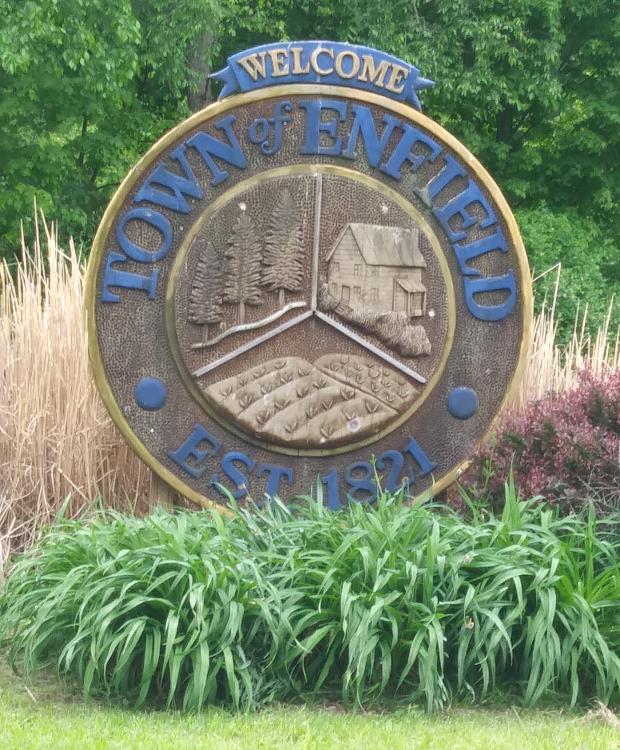
If you’d forgotten the Town of Enfield was drafting a new Comprehensive Plan, you have good reason. The document has been so long in the pipeline, you might have thought the deed was done long ago.
Nope. Wednesday night (Sept. 23rd) at seven before Seven, a unanimous Town Board put its final stamp on the 131-page developmental roadmap, the Plan’s predominant theme that of preserving Enfield’s rural character.
“The Town of Enfield is clear that it values its rural character and natural resources; it does not welcome heavy industry,” the Plan’s infrastructure section clearly states.
But unlike so much else in Enfield politics, the newly-adopted Comprehensive Plan, at least in recent years, has failed to generate controversy. At the document’s last major public outing, a snow squall-plagued Public Hearing last December, only ten people chose to speak. All comments were positive.
Any adoption delays since then have been procedural, including writing the legally-required impact statements and securing County Planning Department approvals. Among the last-minute revisions, embraced by the Board routinely Wednesday, were new introductory paragraphs crediting the accomplishments of Enfield’s earliest, indigenous residents.
For them, all did not end well. “The combination of genocide, loss of land, and epidemic diseases introduced by Europeans caused a collapse of the Cayugan population, decreasing the population to less than half over the course of 200 years,” the newly-inserted paragraphs took note.
But past tragedy aside, the mood at the Town Board’s virtual meeting table Wednesday was one of relief. Some members’ memories stretched back to a 2012-2013 Resident Survey—its participation probably forgotten by many—which helped set the Plan’s priorities, refined in numerous meetings, many held by the Town’s Planning Board. Town Supervisor Beth McGee’s kept count. She claimed more than 50 sessions had been convened.
“We learned a lot,” McGee said of the process. “I hope that people will take this plan and really take all the actions to heart. Even people outside our community can see what our hopes and goals are going forward.”
Enfield activism which led to the Plan’s scripting has been credited for the Town’s early-adopted ban on fracking and subsequent strict regulations on commercial wind energy. The document supersedes a prior Comprehensive Plan adopted in 2001.
Town Councilperson Robert Lynch (this writer) paid tribute to his predecessor in Enfield Governance, retired Councilperson Becky Sims, Lynch saying he wished he could give her the celebratory honor of casting his affirmative vote.
Sims had been instrumental in bringing the Plan into being. “I’m bummed that I’m not going to vote on this,” Sims told her Board colleagues back in December.
“We might be able to nitpick and not like this and not like that,” Lynch observed, “but in sum total it’s a good document and I’m glad I’m voting for it.”
“A comprehensive plan is not a static document,” added Bryant. “It needs to be addressed continually.”
But for now, updates can wait. Bryant ignited her imaginary firecrackers, congratulations were shared all around, and the Board moved on. Enfield’s new Comprehensive Plan is, at long last, adopted law.
###
Make Route 13 Great Again?
Feds’ Ithaca Highway Grant could be Trump’s gift to Reed
Analysis by Robert Lynch, September 21, 2020
“Birkenstock Boulevard!”
Can’t you just hear Donald Trump—or maybe even Tom Reed—shouting out those words at a campaign rally, mocking Ithaca City planners’ vision to transform an ugly, awful, but highly-utilitarian stretch of Route 13 north of the new GreenStar into a “multi-modal walkable thoroughfare” where pedestrians and bikes are as welcome—if not more welcome—than cars?
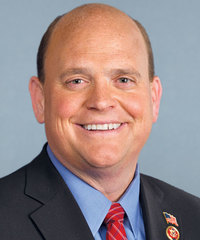
One problem though. Trump’s Department of Transportation just laid out a cool $1.4 Million to help make that Berkeley-esque conversion a reality. Moreover, Trump’s people may have done so to hand Congressman Reed a political favor.
Last Wednesday night (Sept. 16th), when a Common Council committee had expected to discuss that confounded “West End couplet” traffic proposal, Ithaca planners instead announced their freshly-received $1.37 Million grant, awarded under the feds’ Better Utilizing Investment to Leverage Development (BUILD) program. It would reimagine the 1960’s-vintage Route 13 quasi-expressway between “Purity Point” and the Fall Creek bridge near Ithaca High School. Everyone on the Planning Committee gave one another high-fives (as much as one can ever do so on a zoom platform.) They’d never expected the DOT would break free the funds.
But credit the Ithaca Voice’s Brian Crandall for thinking—or reading—outside the box. Buried in Crandall’s otherwise reads-like-a-meeting-minutes Friday, Sept. 18th story was a choice nugget, plucked one day earlier from Politico. It seems Ithaca’s unexpected BUILD grant was the only one of its kind awarded in all of New York State. And Politico speculated Elaine Chao—she’s Mitch McConnell’s wife—had granted the Trump-anointed funds to benefit Congressman Tom Reed, one of President Trump’s most loyal supporters.
Politico surmised partisan favoritism was working overtime, with red states and swing states disproportionately awarded the Department of Transportation’s money; most blue states shut out.
“Though the department says politics plays no role in these decisions, this round of annual discretionary ‘BUILD grant’ awards for infrastructure projects saw the most money go to Texas, Florida and Pennsylvania, which together hold 87 electoral votes combined in the presidential race,” Politico’s Tanya Snyder wrote September 17th.
The Voice’s Crandall repeated Snyder’s quote that “A DOT spokesperson defended the grant award process, saying it’s thorough and originates with career staff, not political appointees.”
If Republican Reed was the grant’s supposed beneficiary, he may not have known it. Or else, his mother never taught him to say “thank-you.” Reed’s official website gives no news of the grant, even though New York’s two Democratic Senators, Chuck Schumer and Kirsten Gillibrand, in a joint statement, crowed about the Ithaca-bound DOT money.
Wrote Schumer, “By investing in pedestrian- and bike-friendly infrastructure at the lake’s waterfront, especially during the pandemic, we ensure that all New Yorkers are able to enjoy the breathtaking scenery that the Southern Tier has to offer – all while reducing harmful fossil fuels.”
Senator Gillibrand gushed similar enthusiasm. But not a peep from Congressman Reed.
What’s more, if Secretary Chao truly gifted the study money to help Trump’s Republican House buddy, maybe her staff never read the Election Day cross-tabs. Whereas Republican Reed beat Democrat Tracy Mitrano District-wide by some ten points in 2018, Mitrano took more than three-quarters of the vote from Tompkins County. She fared even better in the City of Ithaca. Of course, Reed and Mitrano face each other again this November. Have you seen even one “Tom” sign on an Ithaca city lawn this year? I haven’t.
Despite its ambitious name, Ithaca’s BUILD grant, for now, covers only the Route 13 planning, not the bulldozers and backhoes. Still, Mayor Svante Myrick hopes construction cash will come eventually, and he assured The Voice last week, what’s now in hand will be spent wisely.
“That highway [Route 13] cut through the Rhine neighborhood and separated the west end from the rest,” Myrick advised the online paper. “A redesign will engage all stakeholders and ask for community input in order to knit the city back together.”
By way of a recent Planning Board memo, what City Hall envisions for Route 13 is to “transform the corridor into a tree-lined, well-lit, walkable thoroughfare into Ithaca with new intersections, improved crosswalks, and accessible and active uses to either side.” I know, kinda’ hard to imagine, isn’t it?
But first, must we weigh principle against pragmatism? If we believe the grant was a political plum to aid Reed’s re-election, do we reject it outright as dirty money? What do you think? Or do we do what local governments always do; yes, take the money and run, just as Steve Miller advised us. (That’s Miller the rocker, not the White House guy.)
###
Study First, Build Later; controversial West End “Couplet” sidelined for now
by Robert Lynch, September 16, 2020
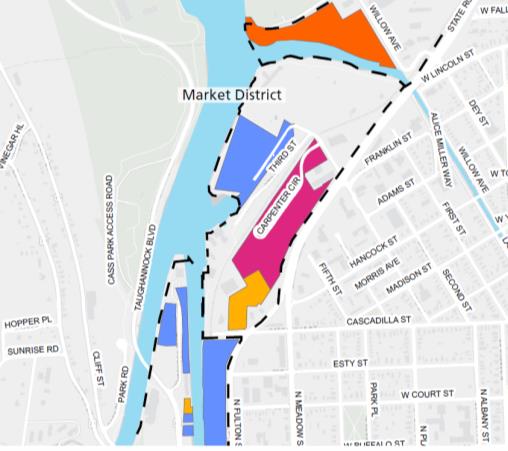
Maybe especially in a University Town, there’s nothing better to slow down a rush to judgment than a well-funded study. And for that reason, don’t expect a City of Ithaca endorsement anytime soon on that worrisome plan by the State to split Route 96 traffic between a pair of one-way streets for just one block through Ithaca’s West End.
Last month, a key Common Council committee tabled action for one month amid concerns that the so-called “West End Couplet” wouldn’t work and might impose unforeseen side-effects. But when the item reappeared on the committee’s agenda Wednesday (Sept. 16th) no one even put a Resolution on the table, or wanted to. Instead, city planners gleefully announced a newly-awarded $1.4 Million federal grant to evaluate a reimagined Route 13. The State Department of Transportation’s fast-tracked demands for Council’s endorsement of the couplet conversion were all but forgotten. Sigh!
“Maybe the couplet is a good idea, or the investigation of it is a good idea,” said Senior Planner Lisa Nicholas. “But we really need something that’s going to serve the whole waterfront vision.”
And that “waterfront vision” is what’s driving the State to press for the couplet—a split in Route 96 traffic between a one-way West Buffalo Street and West Court Street between Fulton and Meadow. DOT thinks it would ease Route 13 congestion. Others doubt it.
The Department’s concern arises because of two new mixed housing and commercial developments that the City is fast-tracking to fruition, one of them between Third Street and the new Greenstar, the other off Willow Avenue. The projects need better road access and the State fears increased traffic.
DOT’s original timetable called for it to implement—some might say “impose”—the couplet in 2023. The U.S. Transportation Department BUILD grant’s impact on that timetable remains unknown.
Never mind for the moment that the pricey traffic study would encompass only Route 13 north of “Purity Point,” the spot where 13’s north-and south-bound lanes merge, well north of the proposed couplet. Planners seem to think a forthcoming meeting with DOT representatives can broaden their focus.
But there’s a big philosophical disconnect to resolve between DOT and local planners, a bridge—to employ a traffic metaphor—that may prove very difficult to cross.
“They (the DOT) want to get cars through the corridor as fast as possible,” Nicholas advised Council’s Planning and Economic Development Committee Wednesday. “The City has a vision of multi-modal transportation… kind of a different approach.” Multi-modal? Think buses, bikes, and foot traffic.
Indeed, to dramatize the conceptual divide, consider this: The City’s Planning Board, in a memo to Council September 10th, professed the City’s “vision to transform the Route 13 corridor into an urban boulevard,” a vision that “aspires to transform the corridor into a tree-lined, well-lit, walkable thoroughfare into Ithaca with new intersections, improved crosswalks, and accessible and active uses to either side.” A heavy lift, to be sure. Drive Route 13 today.
But for those in Enfield and on West Hill, congestion and accidents remain the major concern. And since last month, the couplet has generated a five-to-one ratio of negative comments on the Planning Committee’s website.
“Good God PLEASE do not let them do this,” Brody Burroughs wrote of the couplet.
“Reject the couplet proposal totally and completely and tell the state DOT they are never to consider it again,” chimed in Nathanael Nerode. “It is a terrible, regressive, incompetent idea which should have been left in the 1950s where it originated.”
And remarked Alderperson Cynthia Brock at Wednesday night’s meeting, well-aware of how drivers game the system and try to outsmart the traffic engineers, the couplet is bound, she said, to redirect West End drivers “down that little, itty-bitty, one-lane-in-each-direction segment of Taughannock Boulevard.” Ouch.
Maybe someday; but not right now. Pressure’s off. First, let the study proceed.
###
Tompkins legislators urge Ithaca Police to enforce COVID-19 rules.
by Robert Lynch, September 15, 2020
For the second consecutive meeting this month, two Tompkins County legislators Tuesday night (Sept. 15th) put themselves at odds with Ithaca Police, whose officers decline to enforce distancing and masking requirements to prevent the spread of COVID-19.

“At some point, we’ve got to make known that this can’t continue,” lamented a frustrated legislator Mike Lane. The Dryden lawmaker said he can’t understand why Ithaca officers can’t step in and do their part to enforce compliance with State-imposed coronavirus rules given that Governor Cuomo has asked all police agencies, not just county deputies, to enforce his orders.
At the County Legislature’s previous meeting, September 1st, County Administrator Jason Molino conceded it was “not ideal,” but rather the only workable solution that prompted him to designate the Sheriff’s Department as “the primary response agency throughout Tompkins County, including the City of Ithaca on all calls related to gatherings.”
“This is public welfare in its purest sense,” observed Public Safety Committee Chair Rich John Tuesday. John’s Collegetown-area district spawns many of the complaints to which the Sheriff must now respond because City Police will not. John admitted to the Legislature he was “not aware of any progress” in forcing the City’s change of heart.
“The response I’ve gotten,” said John following talks with IPD, “is that it’s different; this is not typical policing. It’s hard and it’s outside of what they’ve undertaken to do”
“I don’t want this to be a fiat accompli,” responded Lane. We, the County, should be willing to “do our share.” “But,” he added, “I think we should not accept the City’s position that it doesn’t know how to do this.”
Most complaint calls come from within City limits.
Legislator John said he may bring the matter before his committee as soon as Thursday.
Governor Cuomo’s executive orders limit gatherings to no more than 50 people and also require they be masked in public when not socially distanced. Generally, Tompkins deputies have issued warnings, not tickets.
When they met two weeks earlier, county lawmakers were warned Cornell-based spikes of positive coronavirus cases could top 100 soon, which would prompt the Governor to limit the university to online instruction only.
But numbers never got that high. And Tuesday, Cornell officials advised the Legislature that those earlier cases won’t endanger on-campus instruction even if more infections crop up.
Joel Malina, Cornell’s Vice President for University Relations, informed the Legislature that “supplemental guidance” from Albany put the two-week window for infections on a defined schedule, not a rolling average. By so doing, infections that occurred before September 12th no longer count. Malina said campus testers had detected only three positive cases since the current counting period began.
“You get a fresh start when that next period begins,” County Public Health Director Frank Kruppa remarked.
Moreover, Malina reported that the new gubernatorial guidance narrows the universe of persons who contribute to the 100-person cutoff. Populations limit themselves to those living in campus housing, plus on-campus faculty and staff, and only those off-campus students who take at least one in-person class. Those living off-campus and attending all classes virtually wouldn’t add to the total.
County officials did report Tuesday a decline in crowd-related complaints. Whereas 34 complaint calls—28 of them in the City—had been registered the week before the Legislature’s previous meeting, only six complaints—two of them for noise—came in during the most recent weekend.
###
No layoffs, but…
Tompkins Administrator’s Budget cuts staffing 6%; hikes the tax levy nearly 5%
by Robert Lynch, September 15, 2020
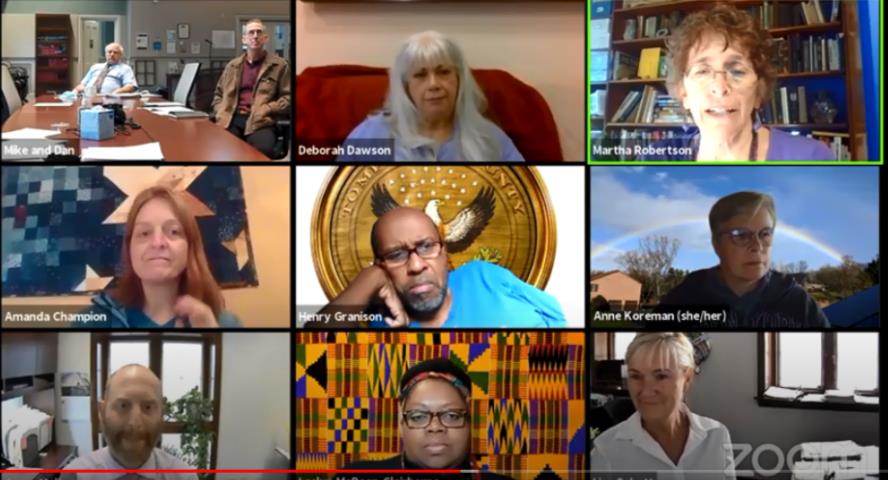
After County Administrator Jason Molino rolled out his Proposed 2021 Tompkins County Budget Monday afternoon (Sept. 14th), a critical observer might ask if Enfield and its parent county live in the same post-COVID financial worlds, and whether they choose similar remedies to solve their respective problems.
The prior Wednesday, Enfield Supervisor Beth McGee presented—and a majority of her Town Board quickly embraced—a nearly $2 Million Tentative (now, Preliminary) Budget that would cut Highway Department work staff by at least 20 percent, probably put one of the Department’s five people out of a job, yet also contain the Enfield tax levy increase to a mere 1.57 per cent.
By contrast, the Molino budget, shared with the County Legislature’s Expanded Budget Committee Monday, would eliminate six per cent of the County’s overall workforce—a purported 47 full-time-equivalent positions—but not lay off a single soul. On the spending side, the $189 Million budget would raise the county tax levy a full 4.97 per cent.
There is one common thread between the Tompkins County and Enfield budgets, however; uncertainty.
“We are still in the midst of a pandemic,” Molino warned the Budget Committee, as if to state the obvious.
“We are trying to take as many conservative, but yet practical approaches providing an opportunity to cushion or react to what the economy may throw at us and what the State may throw at us in terms of unknowns,” he continued.
And yes, both the economy and Albany have thrown local budget planners a lot of whatever you might call it. Molino’s budget forecasts a nearly nine per cent drop in 2021 sales tax receipts over what had been forecast for the current year, and also a 20 per cent cut in state aid.
In terms of property taxes, Molino’s plan would hike the levy far in excess of the meager tax cap Albany has assigned it, 0.88 per cent, a figure kept way beneath inflation by accounting adjustments. In contrast, Supervisor McGee would contain Enfield’s tax levy within the more realistic, though still largely symbolic, tax cap her Town faces, 2.3 per cent.
Because of increasing property assessments—either new construction or raised valuations—the County’s per-thousand tax rate would climb by only 1.17 per cent. The rise translates to an $83 County Tax increase on a $200,000 home. The Administrator’s budget would also impose a $5 per home hike in the solid waste fee.
Molino’s no-layoff policy could taste bittersweet for those whose jobs stand on the chopping block. Despite attrition, 18 current workers would need to be reassigned, and the Administrator conceded some of those new jobs might be at lower pay and require transferees to take a new civil service test. Some might turn those offers down.
“Bottom line: If they want the job, they will have a job,” Molino said of the employees, putting the best face on a less-than-perfect reality.
And despite the budget’s superficial austerity, the deep internals of the Administrator’s plan reveal protection of many a sacred cow, most notably the planned $28 Million “Downtown Campus,” a new County Office Building being its principal shining jewel, together with related renovations.
Also preserved within the budget is $4 Million earmarked for upgrading the Public Safety Building and jail; $6 Million for underwriting airport terminal construction that was supposed to have been State- and passenger-funded, and $30 Million for so-called “Green Facilities.”
The $189 Million County Budget would more than double its contingency fund, shoveling in an additional $1 Million over the customary $900,000 set-aside. Some of the extra cash could find its way toward bailing out an ailing TC3, the college bleeding red ink.
As for the County’s Fund Balance,—think of that as a permanent public savings account, best left undisturbed—Molino acknowledged the balance took a big hit during COVID. The balance stood at more than $46 Million last New Year’s Eve, equaling nearly a quarter of annual County revenues. Now the Administrator’s best hope is that it will fall no lower than $34 Million, 18 per cent of revenues, by the end of next year.
“It’s a good place to be,” Molino said of the 18 per cent target. “It’s a big drop in fund balance, but it’s a good place to be.”
The always-changing loss projected from COVID’s economic turndown is a “moving target,” the Administrator admitted. The pandemic may drain the fund down by as much as $5.5 Million this year alone. Then, again, the budget also projects syphoning off as much as $2.7 Million from the fund balance next year for those new capital projects.
“This County spends money on what it wants to spend money on,” quipped one well-placed, long-time veteran of County Government.
No, Tompkins County is not Enfield. Their finances reside in different economic strata. And each unit of government hammers out its solutions in its own preferred way. And in coming weeks, Tompkins County legislators are likely to slip pet projects back into their Administrator’s facially austere spending plan. They always do.
###
Enfield Board, Highway Chief argue, grumble, but pay big-ticket highway bills
by Robert Lynch, September 10, 2020; updated Sept. 12, 2020
A three-way, six-figure financial tussle involving the Highway Superintendent, the Enfield Town Board’s majority, and one maverick Councilperson, ended Wednesday (Sept. 9th) with an uneasy truce; one nobody completely liked, but one which got the job done, and maybe also staved off the bill collector.

After lengthy, often heated debate, and with Supervisor Beth McGee casting her dissent, the Town Board voted to pay two big-ticket invoices for materials Highway Superintendent Barry “Buddy” Rollins had purchased to upgrade several Enfield roads in recent weeks. McGee and most of her colleagues on the Town Board insisted they had not authorized the purchases.
“I’m dealing with people who don’t know what they’re talking about,” a frustrated Rollins complained to the Board as it began a 50-minute discussion to decide whether to pay the bills; where the money would come from; and most importantly, how much oversight the Board should have over Rollins’ spending.
On September 4th, Rollins requested payment of $80,340 to Suit-Kote Corporation and $90,068 to Seneca Stone Corp. for asphalt and stone used to resurface several roads in the town. Rollins sought payment under several accounts, most of them State-reimbursed through the Consolidated Local Street and Highway Improvement Program, better known as “CHIPS.” Under CHIPS, towns must first spend the money. Only thereafter can they seek reimbursement.
But Albany’s COVID-spawned frugality has complicated this year’s CHIPS payments. The State Department of Transportation has warned of—and most observers predict it will, indeed, impose—a 20 per cent reimbursement cut. That could reduce Enfield’s earlier-promised allotment under three separate CHIPS-related accounts by nearly $30,000. Enfield’s 2020 Budget fails to address that shortfall. McGee and the Board’s majority would prefer to cut road spending to avoid the deficit and insist Rollins was never authorized to spend the money until the Board first transferred Town funds to cover the cost.
“You’re going to lose it if you don’t use it,” Rollins said of the CHIPS money, even though Tompkins County’s Highway Director has predicted any unpaid funds from one year are likely—though not with certainty—to be rolled over by Albany into the following year.
“I agree we shouldn’t lose the State funding,” said Councilperson Mimi Mehaffey, who eventually crafted the compromise that enabled payment. “But I want to do it legally. I don’t want to do it illegally.”
Until Wednesday’s meeting, only Councilperson Robert Lynch (this writer) had approved the bills’ payment—a legal requirement—with his signature. Other members had refused to do so, though the law requires multiple signatures before a check can be cut. (After Wednesday’s meeting, others later signed.)
“I know that Suit-Kote and Seneca Stone are not just going to sit back and write off this debt,” Lynch warned at Wednesday’s meeting. “They’ve got lawyers; and frankly, I don’t want this town to be sued by them.”
Further muddying the legal waters is the fact that Rollins spent the money well within the limits of a so-called “284 Agreement,” an annual document that four Councilpersons—but notably, not McGee—had signed in January promising that over $304,000 “shall be expended” during the current year for Enfield road repairs, either as general maintenance or as “permanent improvements.”
The 284 Agreement targeted only one Enfield road, Aiken Road, by name. Nonetheless, Rollins spent money for roads not listed in the agreement, including Gray, Rothermich, and Enfield Center Roads. None of the other roads was listed on the 284 document or in the Town Board’s 2020 Capital Plan. Rollins insisted Wednesday that the Capital Plan does not bind his decisions.
“What the Hell am I doing as a Town Board member if one person (namely, Rollins) is deciding where every penny gets spent?” Mehaffey questioned. “I don’t want to get into a lawsuit. I don’t want to make everybody personally responsible…. But at the same time, this has got to stop.”
Lynch insisted that only the Town’s annual budget and the yearly 284 Agreement restrict Rollins spending discretion. In 2021, he said hypothetically, “We can refuse to sign the 284, and thus basically starve Buddy of money to do everything.”
When peppered with Supervisor McGee’s questions as to where in the Town’s nearly $2 Million budget Lynch might find the carry-over money, Lynch pointed to a highway savings line saying, “I’m willing to take a leap of faith it’s not in the red.”
After much debate, the Board, albeit reluctantly, adopted Mehaffey’s motion to temporarily transfer moneys from a Highway Equipment fund to pay the two bills, more than $170,000 in total. “Not on your life,” Supervisor McGee exclaimed as she cast her lone dissent. (Councilperson Virginia Bryant was absent for the vote.)
“I’m not part of this,” McGee said prior to voting her objection. “I’m not going to participate in encouraging this sort of unethical use of Town funds anymore.”
Though McGee customarily signs the Town’s checks, she has refused to do so for the two contested invoices. Bill-paying duties will fall, instead, upon her deputy, Councilperson Stephanie Redmond.
“It’s not a one-person show,” said Mehaffey, complaining that Rollins holds too much discretion over spending what she said accounts for 80 per cent of the Town’s budget.
Rollins, by contrast, expressed his loss of confidence in the Board’s collective wisdom. Referring to the audio minutes, the highway chief remarked, “I hope you guys do listen to these meetings because they’re really pathetic; how you carry on.”
###
Catch it if you can!
Fast-Tracked Enfield Budget raises Supervisor’s pay; cuts Highway staff 20%
by Robert Lynch, September 9, 2020
At three minutes before Three Wednesday afternoon (September 9th), Enfield Supervisor Beth McGee rolled out her $1.97 Million tentative budget. Some six hours later, McGee’s Town Board had elevated her cut-here, spend more there spending plan to Preliminary Budget status, carrying it nearly half the distance toward final adoption.

This is a “vindictive budget” complained Councilperson Robert Lynch (this writer), the lone Board member to vote against sending McGee’s proposal to a September 30th Public Hearing without first a line-by-line review. Lynch faulted McGee for slashing Highway Department spending—including eliminating one of Highway Superintendent Barry “Buddy” Rollins five employees—because of the Supervisor’s ongoing disagreements with Rollins about how he administers road maintenance.
The Supervisor’s plan would cut Highway Department spending by more than $101,000, or 9.6 per cent. In addition to eliminating 20 per cent of Rollins’ department’s workforce, McGee would strip the Highway Superintendent of his Town-paid health insurance unless, as she proposes, the Town Board grants health insurance to the Town Supervisor and the Town Clerk, both technically part-time.
“It is blatant discrimination not to do so,” the Supervisor wrote in her accompanying budget narrative, noting the incumbent Supervisor and Clerk are women, while Superintendent Rollins in male.
Elsewhere in the meeting, the Supervisor hurled unsubstantiated allegations of sexism against Councilperson Lynch, the only man on the five-person Board.
“It’s so easy to beat up on the boy,” Lynch muttered in frustration after one of several rounds of criticism leveled by McGee and her female colleagues landed on him.
While the Highway Department stands as the big loser in Enfield’s proposed budget, top administrators would fare better. McGee would raise her own Supervisor’s salary by 20 per cent to $24,000, and the Town Clerk’s salary by an equal amount through two separate budget lines.
McGee would retain a $10,000 salary for her Deputy Supervisor, Stephanie Redmond, the Deputy’s raise controversially awarded earlier this year. McGee has stated her own intention to resign before Election Day and is clearly grooming Redmond to succeed her.
Town Clerk Ellen Woods, meanwhile, voiced criticism several times during Wednesday’s meeting that the raise McGee proposed for her was too meager.
“Do not think my intention is money,” Woods told the Board at one point. The Clerk’s current $20,000 salary, she said, has “an effect on my psyche.” Woods insists she works at least an effective full-time job and that her pay computes to less than minimum wage.
“It would be a dream of mine to (work just) 40 hours,” the Clerk told the Board.
In last year’s funding cycle, McGee released her tentative budget later, in early October, and then convened as many as three subsequent meetings to discuss and revise the plan before the Board raised it to a more formalized Preliminary Budget, a point beyond which changes are harder to make. Though Lynch persuaded his colleagues to convene a budget review meeting September 23rd, no revisions made then could alter the package put before the Hearing one week later. The Town Board dismissed the legal option to delay its Hearing until after Election Day. It has until November 20th to adopt its budget in final form.
Some speculate that McGee has intentionally sped up the process so as to complete the document sooner and then resign. She’s made her departure intentions known since March but has repeatedly declined to set a resignation date.
As was the case last year, McGee Wednesday put heightened importance in drafting a budget whose levy increase falls beneath the state-established “tax cap,” a percentage which changes from year to year.
McGee calculates her levy increase for the year ahead at 1.57 per cent, well below the State’s 2.3 per cent tax cap number. For the budget crafted last year, the cap was much higher, just over four percent, and the Town tax levy rose nearly to meet it.
“While the threats of some were dire, I have recommended a budget that remains well below the tax cap in observance of the possibility that the County tax rate may increase significantly,” McGee wrote in her budget summary.
Councilperson Lynch responded at Wednesday’s meeting that Enfield should not “strangle” its own budget and deny residents needed services just to compensate for expected higher County taxes.
“The tax cap is essentially a political unicorn; an imaginary, yet toothless beast,” Lynch stated before the Board. It’s an Albany ploy “enacted by politicians to reward politicians; to make them look good in the taxpayers’ eyes,” he said. What’s more important, the Councilperson argued, “is to craft a town budget responsibly.” Lynch made clear he thought McGee’s spending plan was not responsible.
The State would impose no penalty on Enfield for exceeding the tax cap, but the Board cleared away the lone obstacle to its exceeding that figure, if it finds necessary. It approved with the required 60 per cent majority—the vote was unanimous by the four members present—to override the state cap.
Only two people addressed the issue at a Public Hearing prior to the tax cap vote. Marcus Gingerich urged the Board to exercise fiscal restraint, even amidst the COVID-19 pandemic’s economic fallout.
“Do not have the mentality that it’s going to be painful for everyone, so just ‘suck it up,’ Gingerich admonished the Board.
The 2021 Town of Enfield Tentative (now Preliminary) Budget can be viewed at: http://townofenfield.org/wp-content/uploads/2020/09/Town-of-Enfield-2021-Tentative-Budget-and-Summary.pdf
###
Reduced inflation cuts Enfield Tax Cap to just over two per cent
by Robert Lynch, September 4, 2020
Largely symbolic, yet still politically potent, New York State has set the tax cap for next year’s Enfield Town Budget. The level of tax levy increase allowing Enfield to remain within the cap stands only at a fraction above two per cent; about half what it was for the current year’s budget adopted by the Town Board last fall. Lower inflation gets the credit—or the blame.
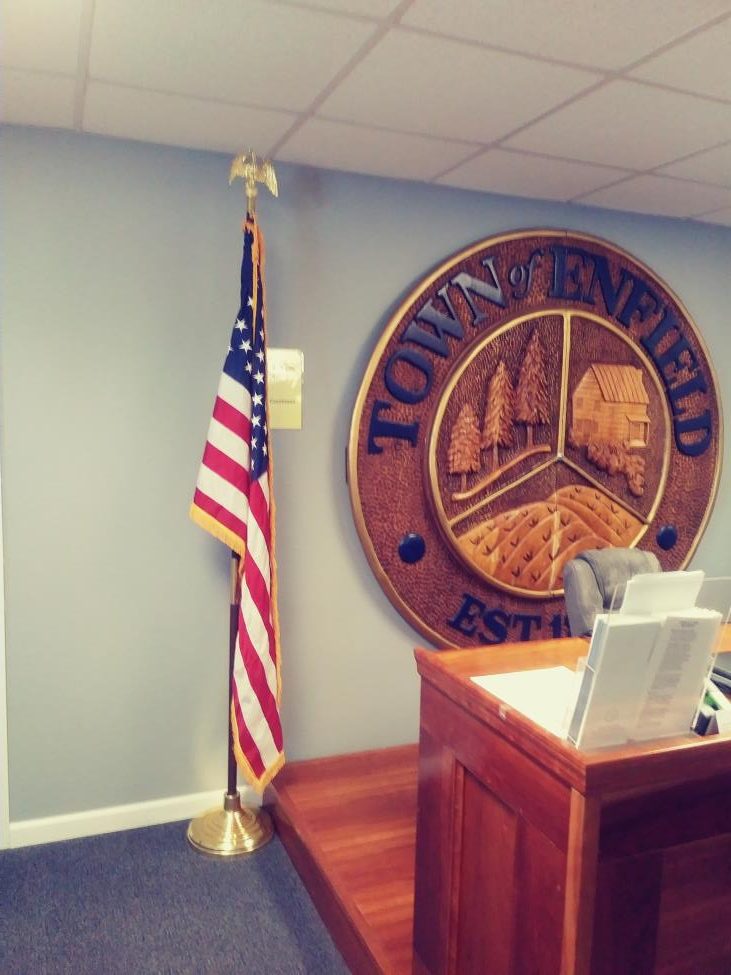
Supervisor Beth McGee announced Thursday (Sept. 3rd) that calculations from the State Comptroller’s Office place the 2021 Enfield tax cap at 2.3 per cent. That’s down almost half from the slightly over four per cent (4.16%) cap the State allowed for the 2020 levy.
The Enfield Board stayed within the higher tax cap last fall, but just barely. The final adopted budget placed the combined Town and Fire District tax levy increase at 3.99 per cent or approximately a $71,000 increase from the prior year. The Town levied just over $1,861,000 in taxes during 2020.
“The tax cap is essentially a political unicorn; an imaginary, yet toothless beast,” remarked Enfield Councilperson Robert Lynch (this writer). “The cap stems from a nearly decade-old law enacted by politicians to reward politicians; to make them look good in the taxpayers’ eyes, to superficially paint them as fiscally responsible”
As has become an annual tradition for most towns, including Enfield, its Town Board will hold a Public Hearing, via zoom conference, Wednesday, September 9th at 6 PM (note the earlier time) to take public comment on whether the Board should override the tax cap, if necessary, when it adopts its final 2021 budget later this year.
Town officials have stressed that approving an override does not necessary bind the Town Board to exceed the cap with its final budget. Rather, it only preserves the Board’s options.
The State-determined tax cap is lower for the year ahead because inflation has fallen. Comptroller Thomas DiNapoli announced in July that the pre-adjusted benchmark tax cap for all counties, towns, and fire districts in the state would be a mere 1.56 per cent, well under the “two per cent” threshold by which the limitation commonly gets its name. Under State law, when inflation is high, the two per cent limit controls the increase. But when inflation falls below two percent, the inflation rate sets the ceiling.
The slightly higher 2.3 per cent figure for Enfield results from State-calculated adjustments, the principal of which ratchets the tax cap upward to reflect increased property values.
“Unlike school districts,” noted Councilperson Lynch, “there’s little pain or financial downside for a town board or county legislature to override an arbitrarily-set state tax cap. When a school district exceeds the cap, its budget must pass in a referendum by a super-majority vote. And exceeding the cap can jeopardize a school tax rebate. But with towns like Enfield, there is no rebate. And though we must adopt a tax override law by a 60 per cent vote of our members, our five-person Board must always vote that way to get anything passed. Do the math.”
“What’s more important,” Lynch said,” is to craft a town budget responsibly. Spend and tax for what your town needs, but leave it at that.”
State law permits a Town Board to adopt a tax cap override—by that 60 per cent super-majority—at any time following its mandated Public Hearing up until the date it adopts its final budget, usually in early-November. Enfield Board members have not indicated whether they’ll act on the tax cap override at their Wednesday meeting.
Supervisor McGee has said she intends to release her tentative 2021 budget—the first step in a multi-meeting, multi-stage process, during Wednesday’s session.
###
Planners raise Roundabouts as possible Route 13 remedy
by Robert Lynch, September 3, 2020
First; Biased Reporter Alert: I hate roundabouts! Ontario County foolishly—and wastefully—built one last year at the intersection of two country roads about a half-mile from my Phelps family farmstead. (You can read about that boondoggle elsewhere on this website.)
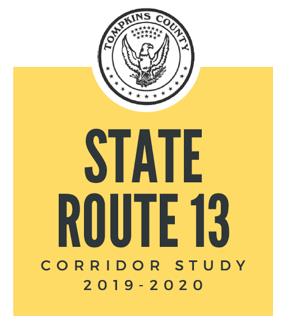
So quickly after I joined a Tompkins County webinar Thursday (Sept. 3rd) , one that addressed potential improvements to the Route 13 corridor between Warren Road and Dryden, I found myself playing a drinking game. (Sorry, just water; not the hard stuff.) I’d take a swig every time traffic planners mentioned that dreaded “R-Word.” I soon gave up. If it were tequila and not good old Enfield tap water, I’d have been too tipsy to write this story.
Tompkins County has good intentions. It wants to improve traffic flow, reduce congestion, and cut accidents on the overused and underbuilt traffic artery that one planner described Thursday as the county’s “primary people mover.” So consultants held an on-line webinar to in the words of County planners, “provide strategic guidance for future projects and help protect the functionality and capacity of the roadway while ensuring the safety of its users.”
Okay, enough for intentions. What do they want to do?
The answer soon became clear. Traffic circles stand as the options of choice. And on that nine-mile stretch of road to Dryden, the Department of Transportation could plop down as many as three of those cursed roundabouts; first at Brown Road near the airport, next at the obscure Lower Creek Road intersection a ways beyond, and then, of course, at that many-tentacle, slam-on-the-brakes-for-the-red-light, free-for-all near NYSEG.
I’ve gotta’ admit, the County’s consultants made my 90-plus zoom minutes fun. Packed with interactive polls, (until their software crashed), the intersection-to-intersection, fast-paced discussion captivated my interest. If only the recommended prescriptions weren’t so misguided; and yes, in this penny-pinching state, truly underwhelming.
A critic like me needed to stand back a bit; look at the big picture; see the forest for the trees. I’m old. I’ve been here before. I remember my radio days in the 70’s when planners first sought to resolve Route 13’s miseries. Then they considered, but rejected, a bypass around Dryden. Sorry, no addressing that jam-sparing option in this study. Engineers ventured no farther east than the Dryden village’s western line.
But the planners took comments. And I found the best ideas coming not from the experts, but from those in the gallery. One online question: Have you thought about an overpass at Warren Road (like downhill at Triphammer)? No, said planner Keith Ewald, “That has not been considered to date.” He didn’t explain why.
Another query from the public: Why does New York State keep building roundabouts while New Jersey is tearing them out in the name of safety? (Yes, I cheered.)
Planner Lorenzo Rotoli later answered in the chat box that Jersey’s circles are often different; high speed, crash-prone. New York’s modern ones, he assured us, are better, they slow you down first.
Yet, the nugget I will most remember is the dirty little secret Rotoli revealed which explains why roundabouts are popping up like dandelions.
“In New York State you have to prove that a roundabout won’t work before you go to a signalized intersection.”
There—of course—is the answer: money. Roundabouts are “less maintenance” than traffic lights. They use less power. And they supposedly save on gas, if only at the margins. Nonetheless, I might add, dizzying circumvolution of traffic doesn’t come cheap. The roundabout near the Phelps farm priced out at nearly $4 Million.
Still, taking that needed step back, I sense that our State—and also our County—are again playing small-ball with Route 13 as they always seem to do; Band-Aid solutions in place of major surgery. From the online hustings, near the webinar’s end, came grass-roots wisdom, untainted by budget lines or professional group-think: Why not corridor expansion; a wider road; a highway truly matched to the traffic that uses it.
“It’s very costly and time-consuming to complete,” was Ewald’s answer. And it would come with a “myriad of problems,” he added. Rights of way would need to be bought. There’d be “extreme impacts on environmental resources and private property,” proclaimed the planners’ PowerPoint, adding that it’s “not a catch-all strategy.” Nonetheless, why did nearly a quarter of us in one of those snapshot polls say we wanted the corridor expansion that the planners had so readily waived away?
Organizers told us—we were perhaps nearly 100 strong—that our comments will be collated and published in November, when intermixed with “stakeholder feedback,” that’ll guide state and local hands in deciding what remedies they’ll later build. Though I had a fun time, I somehow think Albany will heed our preferences just about as much as Trump and Pelosi supposedly do when they mail us those coded, time-sensitive surveys begging for our advice, yet still demand we check a contribution box before they’ll bother to read our answers.
One… two… maybe three roundabouts cluttering my mind-wandering drive to Dryden and beyond? Good Grief!
###
Enfield Planning Board wants study before embracing eco-friendly building code
by Robert Lynch, September 2, 2020
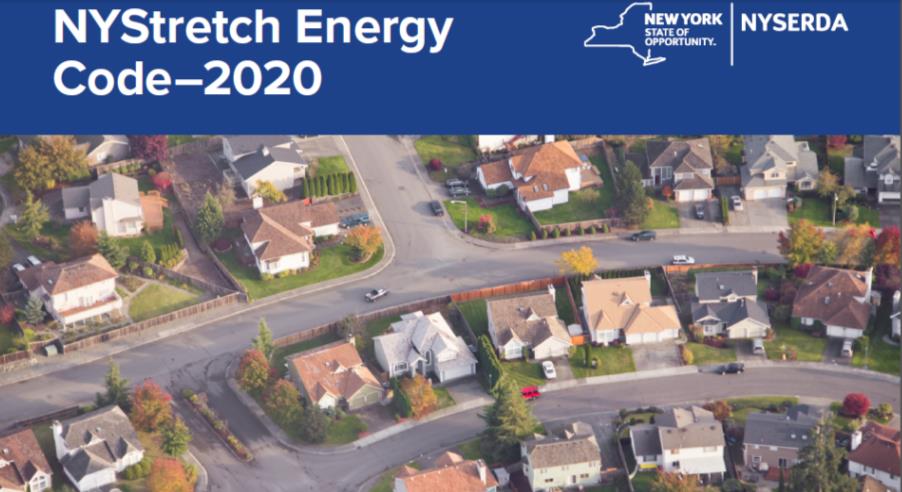
A new, tighter, energy-saving building code—still optional for now—strongly supported by some Enfield Town Board members, will not secure the Town Planning Board’s blessing without further study.
In what arose as little more than an afterthought to close its brief, 40-minute meeting, the Enfield Planning Board Wednesday (Sept. 2nd) unanimously called upon the Town Board to establish a committee of citizens, planners and professionals to “discuss the impacts” of New York’s model Stretch Energy Code, a package of tighter standards which aims to lower energy costs through thicker insulation, better plumbing and solar readiness.
When an Extension representative and an energy executive briefed the Town Board on the NYStretch Code June 10th, those experts predicted adherence to NYStretch standards might cost the average homebuilder $1,500 to $2,000, but return up to 12 per cent in energy savings.
At least two Town Board members at the time gave NYStretch enthusiastic support. Planning Board members Wednesday were more cautious.
“Everything’s tighter and tighter and tighter,” observed Planning Board member and former Councilperson Michael Carpenter, referring to building codes. “Some of the changes are not the best things to do.”
“Let’s not jump into it,” echoed Carpenter’s Planning Board colleague, Ann Chaffee. She and others urged the Town Board to place professional builders, not just random citizens or activists, on the committee they recommended. That way, Chaffee said, the group can provide “respectable numbers.”
The Planning Board designated Carpenter to represent it on the committee and also urged Enfield Codes Officer Alan Teeter to sit on the panel.
Both Enfield Councilperson Robert Lynch (this writer) and Supervisor Beth McGee attended the online Planning Board meeting as spectators. Lynch told the Board he’d welcome both the new committee and Carpenter’s membership. McGee remained silent.
When Cooperative Extension’s Terry Carroll and Tatem Engineering’s Lou Vogel briefed the Town Board in June, both Supervisor McGee and Councilperson Mimi Mehaffey welcomed the NYStretch Code and encouraged its prompt adoption.
“I don’t think it’s more restrictive, I think it’s a way forward,” said McGee. And when informed that no other local town had yet adopted NYStretch, the Supervisor suggested Enfield take the lead.
“Somebody’s got to be first,” she responded.
Codes Officer Teeter has predicted that new aspirational building codes like Stretch usually become state mandates about three years after they’re introduced.
“If it’s going to be a requirement in three years, why not do it now?” asked Mehaffey in June. “I’d like to move fairly quickly.”
Board skepticism Wednesday suggested that when it comes to NYStretch, those on the planning side of Enfield Government would prefer a little gentle braking and not a heavy foot on the codes-tightening accelerator.
In other business, the Planning Board set October 7th for a Public Hearing on the subdivision of some 250 acres east of Applegate Road—essentially the redrawing lot lines—to create what some have speculated might become home for Enfield’s next big solar farm. But discussion Wednesday suggested that the solar farm option may be more rumor than reality; the result of a lone speculator’s casual one-time inquiry to Planning Board Chair Dan Walker.
“If I had a crystal ball, I would tell you what’s going in there,” said land owner Barbara Masser to the Board. “We just want to sell it and decrease our tax burden.”
###
Conception today; Consequence tomorrow?
Tompkins Legislature endorses New York Green Amendment
by Robert Lynch, September 2, 2020
Fifteen little words: They sound good… so long as they don’t trip you up.

Without dissent, the Tompkins County Legislature Tuesday (Sept. 1st) endorsed adding a “Green Amendment” to the New York State Constitution. The Amendment could reach statewide voters as soon as next year.
The words it would add are lofty, aspirational, and few:
“Each person shall have a right to clean air and water, and a healthful environment.”
What’s wrong with that? It’s as American—and earthy—as hot dogs, motherhood, and apple pie.
Then, again, wieners have salt. Your mom can nag you. And apple pie left out of the fridge too long can grow mold.
“This is your baby,” Legislator Deborah Dawson proudly proclaimed as she handed off the Amendment’s sales job to her colleague Anna Kelles, now the Democratic nominee to succeed Barbara Lifton in the New York State Assembly. If elected, Kelles would get to vote on the Green Amendment a second and final time before sending it to the referendum that would complete New York’s byzantine, three-step, Constitutional Amendment process.
Kelles explained to the County Legislature that an activist group, Environmental Advocates of New York (EANY), is pressing for county-by-county endorsements of the Green Amendment so as to give it that final push. She said EANY reached out first to Tompkins County, “because we know you to be environmentally conscious and take the lead on these things.”
But again, what about those sour apples in that oh-so-aromatic pie?
“It’s a beautiful sentiment,” responded Legislator Mike Lane, who added his vote to those of his colleagues. “I just want to say that there are many unintended consequences here that none of us know about.”
“This could be something that might cost the state and municipalities quite a lot of money,” the Dryden lawmaker (and attorney) cautioned.
Kelles conceded Lane’s point. “There’s that recognition that it has that potential,” the Assembly nominee acknowledged. Presumably, some in Albany recognize that whenever something’s made “a right,” lawyers can move in to enforce those 15 pretty new words with public and private obligations.
Nonetheless, County Legislators left devilish details for a later day. The Resolution, which cleared with bipartisan backing, targets as Public Enemy Number One everything from fracking waste to Algal Blooms; and tosses in invasive species, deluges, droughts, and lead water pipes for good measure. (Did I mention putrid water and “disproportionate environmental impacts on environmental justice and frontline communities?”)
The Green Amendment: Come November 2021, you may see it on a ballot near you. Then keep your lawyer’s number on speed dial.
###
Cornell COVID cluster jumps to 21 students; County legislator warns of “spiral”
by Robert Lynch, September 1, 2020
A newly-expanding cluster of student COVID-19 infections puts Cornell University’s live instruction in jeopardy and places it more than one-fifth of the way to a gubernatorial padlock.

Tompkins County Administrator Jason Molino and Public Health Director Frank Kruppa disclosed to the County Legislature Tuesday evening (Sept. 1st) that the cluster of student coronavirus infections, first reported the previous Friday at nine persons, has quickly spiked to 21 with Cornell’s identification of 12 additional positive cases since then.
Under Governor Andrew Cuomo’s executive mandates, should Cornell or any other institution of higher learning report more than 100 new COVID-19 cases (or the infection of five per cent of its student body) over a two-week period, in-person instruction would need to end and the college revert to online teaching for the subsequent two weeks.
The latest-released statistics place Cornell just 79 COVID cases short of a State shut-down threshold.
“It is serious business,” confided one Tompkins County Legislator minutes after hearing the numbers.
“I’m very concerned this could spiral out of control very quickly,” warned another legislator, the City of Ithaca’s Rich John.
Neither Cornell nor the County had announced the cluster’s 12-student increase prior to Tuesday’s meeting. And the numbers had not even been shared on Cornell’s much-touted COVID-19 Tracking Dashboard by the time the Legislature adjourned.
The Cornell cluster infections—which Health Director Kruppa stressed arose from “a series of smaller gatherings,” and not just a single party—contributed to the 37 additional COVID-19 cases tallied county-wide, both on- and off-campus, in the two weeks since the County Legislature last met.
Kruppa reasoned that the quickly-rising COVID spike represented by the Cornell cluster may have been isolated and contained. He said those who’d joined in the gatherings have been identified and quarantined, leading to his confidence. But “I can never tell you it’s not going to get bigger,” the Health Director cautioned.
Kruppa told the lawmakers that those who’d gathered in the clusters had neither worn masks nor practiced social distancing.
Many in the Ithaca community have feared in recent weeks that the return of local college students could bring an end to Tompkins County’s enviably low infection rates. As recently as Wednesday, August 26th, only 244 County residents had tested positive for COVID-19 since the pandemic began, with only ten of them still unrecovered. Largely the result of the Cornell cluster, the number of unrecovered local persons had risen to 32 by the night the Legislature met.
To date, no local person has died of the disease and no one is currently hospitalized with it.
But for some lawmakers, the student presence could bring those good times to an end.
“There’s a percentage that is absolutely ignoring this,” warned Legislator John, recounting a tour of his Cornell-centered district. “I’m not saying we issue tickets,” he added. “But people who are blatantly violating these requirements to socially distance and to protect each other need to know… it’s not okay; that this will not be ignored.”
Which brings up the police, specifically the Ithaca Police, who’ve made it their policy to ignore complaints about gatherings, unless there’s excessive noise. Legislator John, for one, would like the IPD step up.
“I sure would like to see a consistent, coordinated response,” John said, a response involving Ithaca and campus police, and not just the County Sheriff.
Largely due to the Ithaca Police’s reluctance, the County on August 7th issued a “planned public safety response” which tapped the Sheriff’s Office as “the primary response agency throughout Tompkins County, including the City of Ithaca on all calls related to gatherings.”
During a one-week period ending August 30th, a record 34 complaint calls were investigated, 28 of them in the City. Six of those investigated were given “education” warnings. None were ticketed.
“I’m very nervous,” said John. “I think we need to do a full court press on this.”
“Are we going to take a stance about the fact that the Ithaca City Police are not enforcing this?” asked Dryden’s Mike Lane of John, Chair of the Public Safety Committee.
“It’s a real time issue,” John said in response. We should be addressing it, Mike.”
County Administrator Molino weighed in, acknowledging enforcement delegation to the Sheriff was an act of expedience, not first choice.
“While not ideal, we needed a solution. The Sheriff said, ‘We gotta’ do what we gotta’ do.’ So that’s where we’re at right now.”
###

